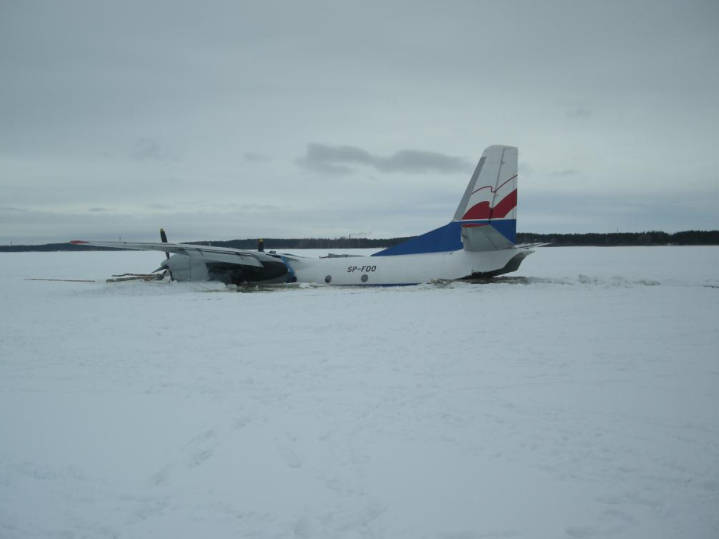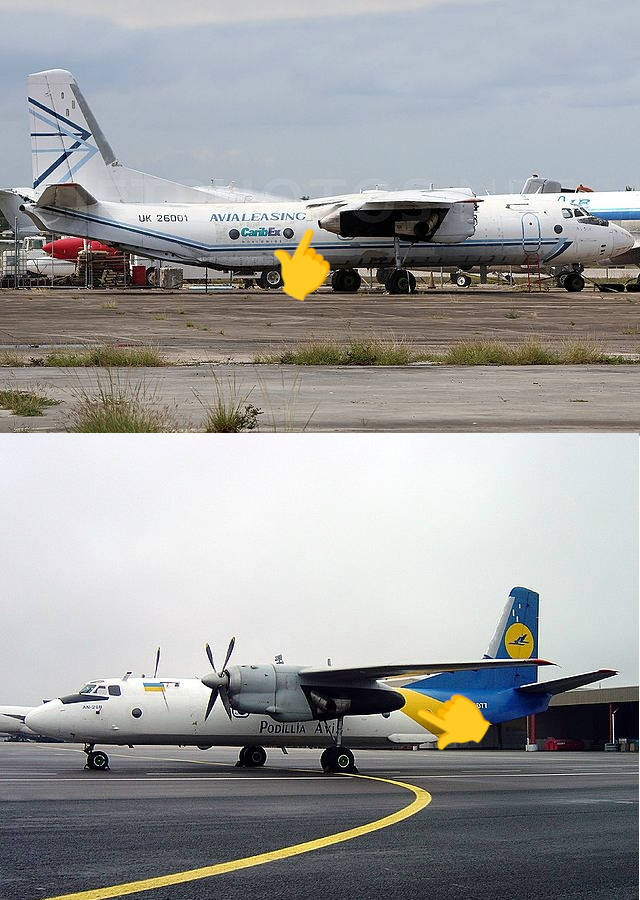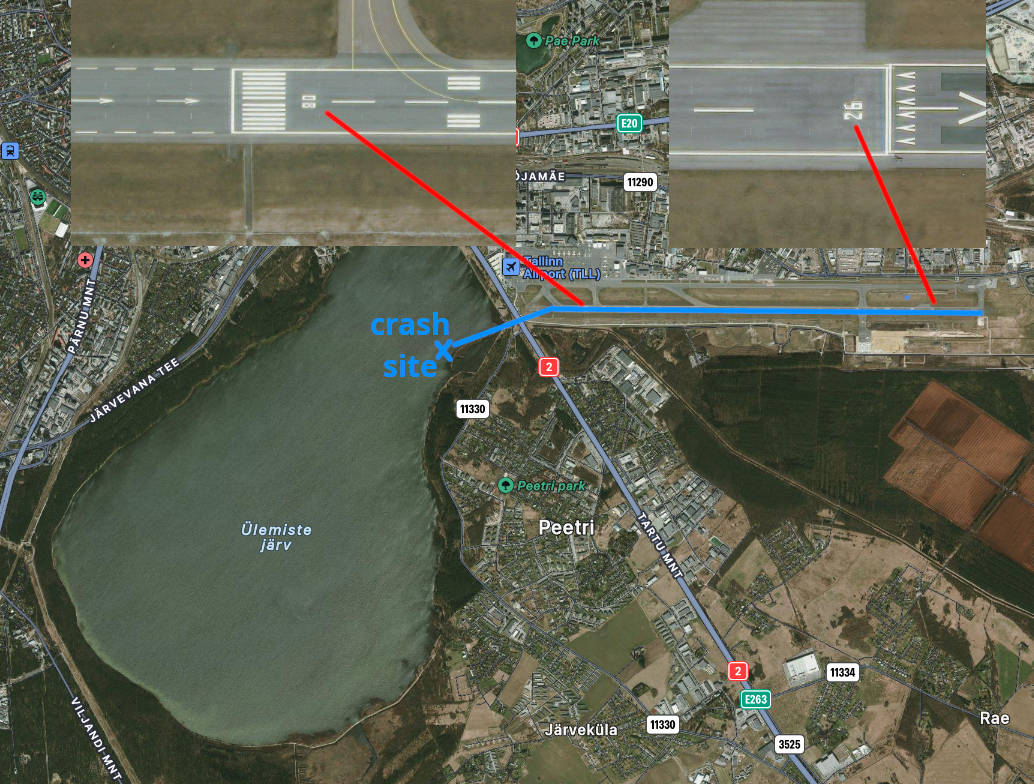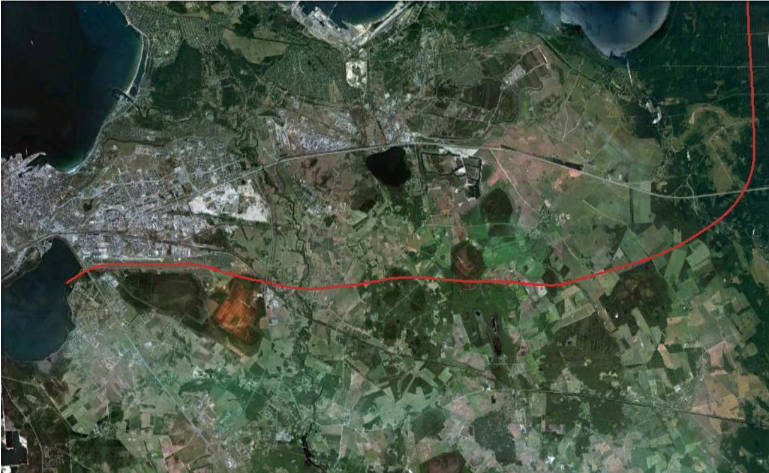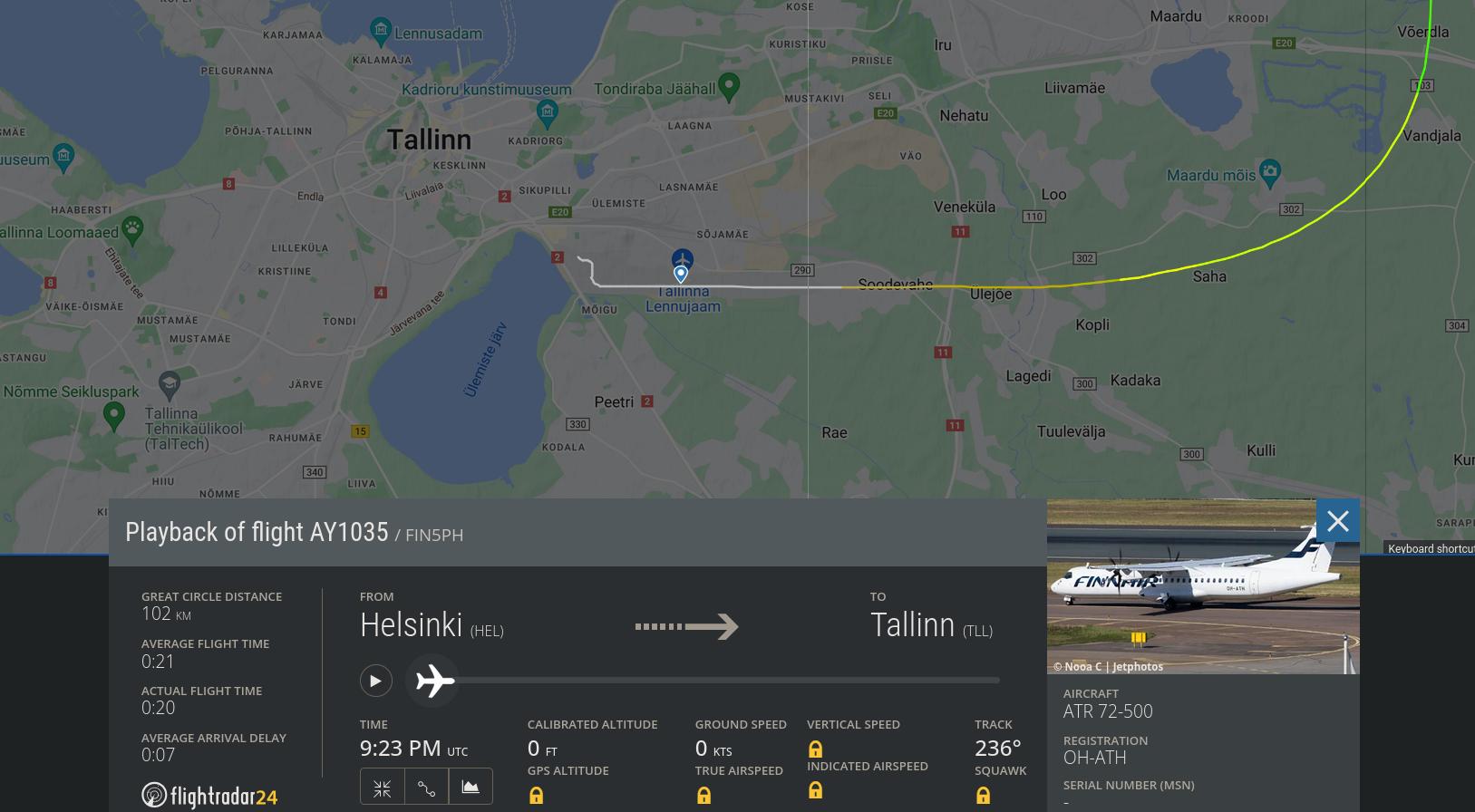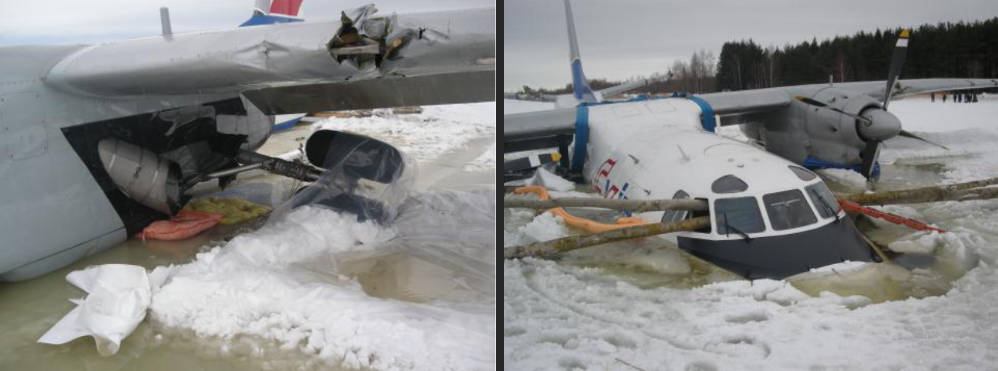Aviation accident: Exin An-26B SP-FDO, Tallinn, 18 March 2010
Today, aviation accidents are quite rare, especially in small countries like Estonia with our relatively low volume of air traffic. Nevertheless, one event resurfaced in my memory a few days ago. What made it interesting for an average person like me was the fact that the involved aircraft landed on the then frozen Ülemiste järv, which isn't only a lake next to the Tallinn Airport but also the main source of water for the city.
Introduction
Exin was a Polish cargo airline that operated regular flights between Tallinn and Helsinki. They used an old Soviet transport plane, the An-26B, with the registration number SP-FDO. It was designed to carry freight along short and medium-range routes, making it a viable option for the job.
The aircraft is equipped with two engines with the propellers located under the wings on each side.
During my research, I discovered that there's also a third jet engine hidden in the right nacelle! It functions as an auxiliary power unit (APU), and provides additional thrust during takeoff. In the event of a failure of one of the main engines, it can also be activated in-flight.
Take a look at the image below: the right nacelle (top photo) has a special exit for the air coming from the jet engine, while the left nacelle (bottom photo) is fully covered.
On March 18, 2010, six people boarded the An-26B in Finland. Unlike modern planes, it required more than two pilots to operate. The crew consisted of four people:
- Captain: 4695 total hours, 2295 of them on the type.
- First officer: 990 total hours, 495 of them on the type.
- Navigator: 9071 total hours, 9071 of them on the type.
- Engineer: 5575 total hours, 5575 of them on the type.
They were accompanied by a mechanic, who seemingly was responsible for maintaining the aircraft, and a cargo attendant.
The takeoff weight was 23,954 kg, which was only 46 kg below the limit. Given that multiple ships circulate between Tallinn and Helsinki almost non-stop, I wonder what kind of cargo needs to be transported by air. As we can see, the plane was virtually full.
Flight
The flight across the Baltic Sea to Estonia was uneventful. Our airport has one physical runway that can be used in both ways. Runway 08 goes west to east, while runway 26 goes in the opposite direction - towards the lake.
It's on the approach to runway 26 that the crew noticed a smoke smell in the cockpit and vibrations. They correctly identified that the left engine was causing the problem and switched it off. After that, the pilots attempted to start the auxiliary power unit, the one hidden in the right nacelle. For an undetermined reason, it didn't start, leaving the plane with only one running engine.
That alone can't bring an aircraft down. However, the report describes the atmosphere in the cockpit as chaotic and emotional. It also states that the crew's actions were poorly coordinated and not focused on a safe approach and landing. It is likely that both pilots were distracted by the technical issue, but we can't be sure, as neither the voice recording nor the transcript has been published.
As a result, the plane deviated to the south. On the image below, the red line shows the actual path of the aircraft.
For comparision, here's a screenshot from Flightradar24 with another flight heading straight to the airport:
One more thing worth mentioning is that the cloud base was about 400 feet (~120m). That isn't dramatically low, yet the pilots couldn't see the runway during the approach. The document states that this caused them to maintain a higher speed, but it doesn't elaborate what was their concern. I can only assume that they were afraid they might not get to the airport with just one engine running, although I'm speculating here.
When the An-26B finally reached the runway, it wasn't prepared for landing. Excessive speed can be dangerous, as the plane can sustain serious damage due to excessive forces, and it might not be able to stop before the runway ends. So, the captain applied full power and tried to climb. Without sufficient engine power, the aircraft failed to do so and crashed onto the lake outside the perimeter of the airport.
Fortunately, the plane didn't break the ice upon the contact. It slid for another 200 meters before coming to rest. All six people survived, one of them suffered minor injuries. Curiously, the fuselage sustained only slight damage as a result of the crash, but the subsequent evacuation from the lake caused more serious damage. The hull was eventually written off.
After about one hour, the aircraft partially submerged. Potential contamination was a major concern, as we drink water from the lake, but it was prevented thanks to the joint efforts of the utility company, Rescue Department and other authorities.
Conclusions
The investigation found that the left engine was damaged due to failure in a lubrication system, which led to the issue during the approach. The document provides more details about how the system works and what went wrong, along with some photos of the damaged parts. My knowledge and understanding of engine mechanics are non-existent, so I suggest you checking the report yourself if you're interested. It is also noted that the company mechanic did not hold necessary licenses to perform the maintenance tasks, kind of suggesting that the problem was probably preventable.
The second cause of the accident was the crew's failure to maintain the approach path and adhere to single-engine landing procedures.
Both issues seem to stem from the lack of training provided by Exin to its pilots and other personnel. The investigation issued the following safety recommendations:
- To establish and implement internal training procedures for An-26B crewmembers to ensure adequate skills and preparedness for single engine operations.
- To ensure proper licensing and training for personnel, involved in maintenance of the An-26B fleet.
There's also a recommendation to the Civil Aviation Authority of Poland to increase the quality and effectiveness of safety oversight, as it didn't reveal inadequate training given to the crewmembers.
Aftermath
I couldn't find any recent Exin flights using public sources, so I turned to the Polish version of Wikipedia. It suggests that the company has transformed from an airline to a flight school. What happened to the pilots and other personnel is unknown. Curiously, just five months later, another Exin An-26B was involved in an accident at the Tallinn Airport! According to the media reports, the flight engineer retracted the gear prematurely during takeoff.
Other airlines continue to move freight over the Baltic Sea. I've seen a couple of Airest planes, whose slightly newer Saab 340A(F) aircrafts seem to perform the same function.
Sources
Knowledge:
- The final report
- Accident: Exin AN26 at Tallinn on Mar 18th 2010, gear and engine trouble
- Accident Antonov An-26B SP-FDO, Thursday 18 March 2010
- Airplane emergency landing on Ülemiste lake
- Exin (linia lotnicza)
Images:
